Promerus is a technology-driven organization providing advanced material solutions for next generation applications. Explore our materials.
Promerus is a global leader in Cyclic Olefin Polymers (COP) and is driven to provide advanced material solutions for your challenges in semiconductor, optoelectronics, electronic packaging, and emerging applications.
As a subsidiary of Sumitomo Bakelite Co., Ltd., Promerus is well positioned to deliver our unique material sets to the market. We’d love to help you understand your options when it comes to polymer application requirements.
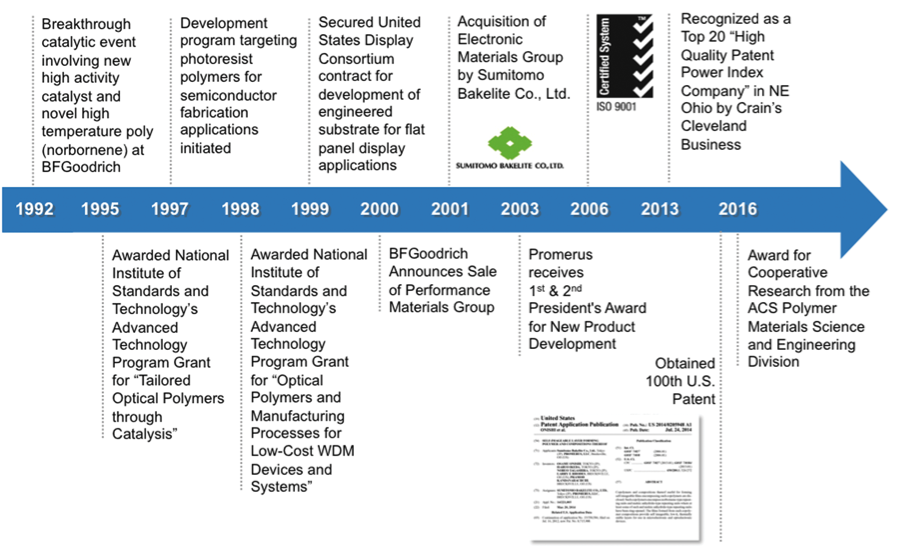
Promerus pioneered the catalyst technology that enabled addition polymerization of polynorbornenes (PNB). PNB is a class of COP, which maintains the bicyclic ring structure in the backbone without the use of comonomers. This allows the PNB backbone to remain rigid, effectively raising the Glass Transition Temperature (Tg) from 100 to > 300 ̊C.
Unlike polyimides, which stiffen as they cure via an outgassing mechanism at elevated cure temperatures, PNB does not require high cure temperatures in order to achieve a high Tg. The ability to maintain high thermal characteristics with glass-like transparency is unique to the industry.
In addition, we can copolymerize a wide variety of norbornenes with functional groups to tailor the PNB polymer to meet your requirements. Through this unique ability to tailor PNB polymer compositions, we are able to adjust the properties of our materials, while maintaining transparency across a broad spectrum of wavelengths.

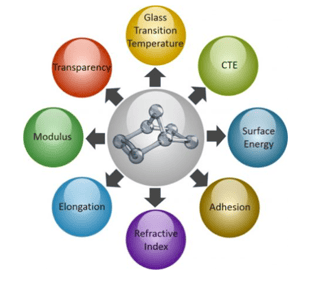
While standard materials are readily available as off-the-shelf products, few are designed for the requirements of specific target applications.
To uncover the appropriate materials for your application, we encourage you to explore our list of tunable materials below.
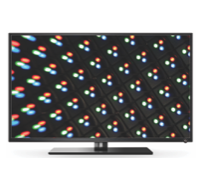
This system is designed to be 100% reactive with no need for solvent. Our proprietary blend is <30 cP, but can also be tailored to a variety of viscosities for dispense techniques, including ink-jetting and jet-dispensing. After a brief thermal cure, it polymerizes and solidifies in place to a thermoset. When blended with additives, it can be designed to have excellent adhesion for mechanical durability and/or high refractive index for improved light extractability.
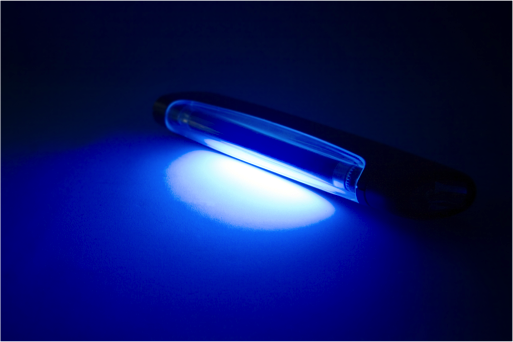
PDM-5005 is designed to be 100% reactive with no need for solvent. This one-part formulation is cured by brief exposure to UV light in the range of 365 to 405 nanometers (nm). A thermal cure is not required to obtain complete conversion. The
dielectric constant is quite low, typically 2.3. The viscosity is less than 30 cP for inkjetting, but it can be tuned for other dispensing
or coating techniques. Upon request, other properties may be tailored to meet your needs.
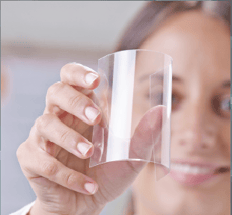
Traditional Cyclic Olefin Polymers (COP) have exceptional glass-like transparency. Similarly, polyimides are known for their
high Tg and good mechanical properties. PDM-5046 combines glass-like transparency, zero birefringence, high thermal stability, and high Tg (200-300 ̊C). The available polymer is soluble in traditional organic solvents (e.g., hexanes, toluene, etc.) and is capable of being converted into film.
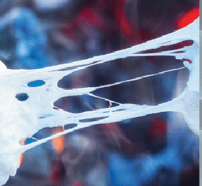
This polymer is specially formulated to combine adhesion and photo-patternability. After spin-coating onto a wafer or other preferred substrate, it undergoes i-line photolithography. Once features are defined by developing in tetramethylammonium hydroxide (TMAH), the wafer can be baked, diced and subject to thermo-compressive bonding (140 ̊C/sec). After a no-outgassing low temperature (175 ̊C) cure, a high strength bond is created between substrates, which can endure wire-bonding or solder reflow temperatures (>4MPa at 260 ̊C).
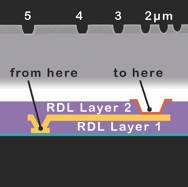
Redistribution is a process that utilizes photo-patternable dielectrics to encapsulate electrically conductive relocation traces. Polynorbornenes are finding their advantage in an industry moving toward smaller features and lower cure temperatures (170-200 ̊C). PDM-5013 has an inherently high Tg from its rigid polycyclic olefin backbone. Unlike its competition, it doesn’t need a high cure temperature to increase the Tg. This low cure temperature, balance of strength (100 MPa) and elongation beyond 40% makes it an attractive candidate for next-generation technologies.

In conjunction with Georgia Institute of Technology, PDM-5019 was evaluated as a thick film photo-patternable material capable of 70-100 μm single-spin coatings. Its inherent high transparency makes high contrast and straight sidewalls achievable.
PDM-5019 is also e-beam sensitive at 10 μC/cm2. Overall, this material is capable of SU-8 like structures with simplified processing.
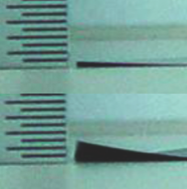
Packaging stress can add up, and PDM-5022 has been utilized to minimize stresses caused by polymer coatings. Typical materials, like polyimide, have a high modulus and cure temperature, causing it to shrink during cure. This is counter-productive to low wafer stress. By employing a non-shrinking, low cure temperature (180 ̊C) mechanism in combination with a low modulus (1.2 GPa), PDM-5022 was designed to reduce wafer curvature (15 μm; 7 MPa stress). This helps to reduce overall package stress.
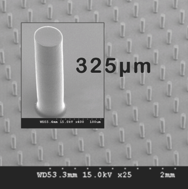
PDM-5025 is a photo-patternable formulation capable of single spin-coatings of more than 50 μm in thickness. PDM-5025 was designed to have a high degree of planarization. Its degree
of planarization is calculated to be more than 90% over 7μm topology. It has been commercially utilized as a standoff layer surrounding wafer-level CMOS Image-Sensors.
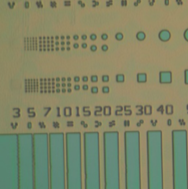
The PDM-5028 platform was designed to eliminate the effects
of formulation additives. Because of this, two technologies were developed—one that relies on a proprietary, self-reacting UV sensitive polymer. The second complementing technology is based on our ability to convert almost any traditionally non-reactive thermoplastic into a thermoset. Both technologies can be used to make photo-patterns with feature sizes less than 50 μm, the diameter of a human hair.
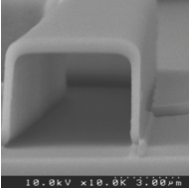
Micro-Electro-Mechanical Systems (MEMS) and other wafer-level packages often require formation and enclosure. PDM-5031 can be spin-coated and processed per standard photoresist processing techniques.
After features have been defined; they can be over-coated and subsequently dry-etched to reveal the desired shape. With its low/no Si-content, PDM-5031 has demonstrated its ability to be dry-etched through large openings or smaller vent holes.
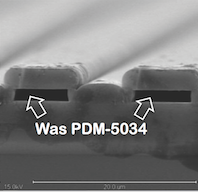
PDM-5034 was designed to produce air gaps on wafer-level substrates. Whether it’s to reap the benefits of a near-perfect dielectric constant of air, or to set the stage for the encapsulation of movable device (e.g., MEMS), our PDM-5034 may aid your development. PDM-5034 has thermally decomposable grades, which cover a decomposition range from 150-400 ̊C.
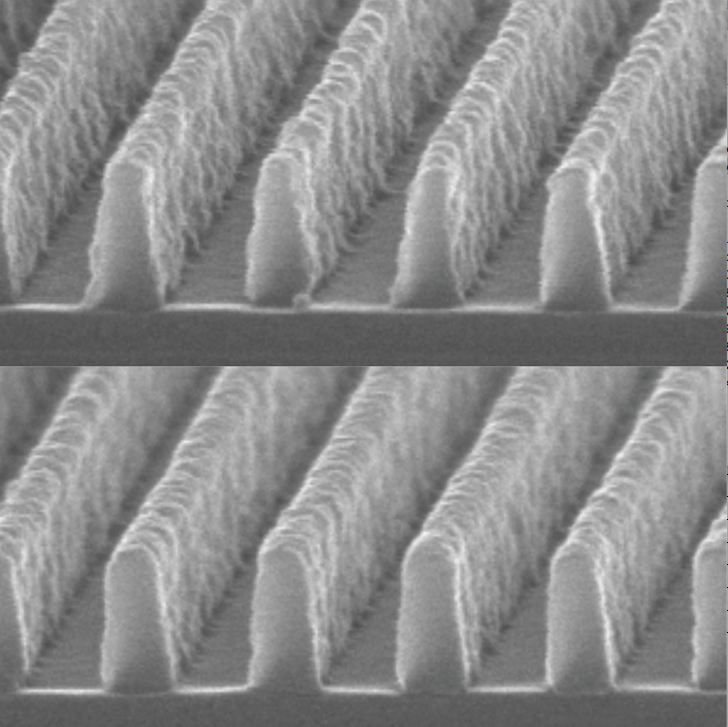
PDM-5040 photoresist is based on polycyclic olefin technology. With proprietary techniques to polymerize COP, our alicyclic backbone is inherently resistant to the tortures of dry-etch conditions without the need to modify pendant functionality. This etch resistance, coupled with our ability to control end group functionalities, leads to a photoresist with a natural improvement to line-edge roughness (LER).
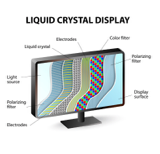
Liquid crystal (LC) displays consist of several layers. The function of the layers adjacent to the LC is to anchor and orient the LC. Traditional methods to create this polymer alignment layer utilize mechanical rubbing to produce micro-scratches and induce LC alignment. After exposing our photosensitive PDM-5043 material through a polarized filter, it’s capable of anchoring and aligning LC with a low pre-tilt angle useful for IPS/FFS next generation displays.
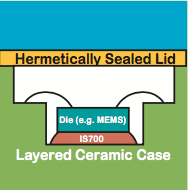
This adhesive paste is thixotropically controlled. It is typically dispensed via syringe into a cavity. A die (e.g., MEMS) can be placed onto the PDM-5001 adhesive and cured. After the PDM-5001 adhesive has been cured, the package can be hermetically sealed. PDM-5001 adhesive does not produce any residue at temperatures up to 330°C, thus preventing stiction of MEMS devices. Its uses include die-attach and coating/lamination of flexible circuits and circuit boards.
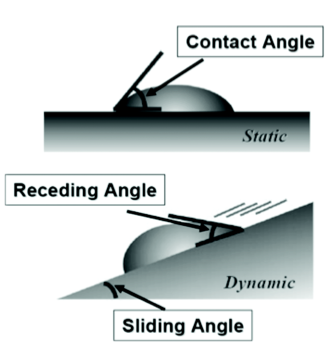
For years, the resolution of photoresists was dictated by the wavelength of light and numerical aperture of the lens, otherwise known as Rayleigh’s Equation. The solution has since increased by putting high refractive index fluids (e.g., H2O) in contact with the lens. To eliminate lens damage and defects caused by water, we developed an exceptionally high purity Top Coat that segregates the resist from the lens. In addition, PDM-5049 balances contact angles and TMAH-dissolution.
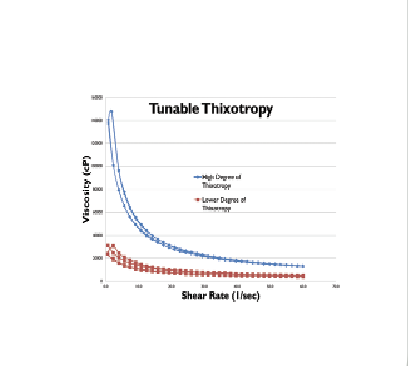
Typical polymer solutions are Newtonian fluids meaning that viscosity is linearly proportional to shear rate. In the case of PDM-5055, when the shear stress is removed, viscosity increases dramatically. This behavior is known as thixotropy. Most commonly, thixotropy can be observed in a stubborn bottle of ketchup. However, this behavior can be practically utilized in thread adhesives, paint and solder pastes. In all cases, when the shear forces are removed, the material has a tendency to stay put.
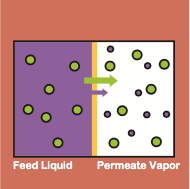
Pervaporation is a process that separates molecules through a membrane under the aid of a vacuum with minimal thermal energy. This process requires less energy than traditional distillation, and is avidly being sought in the industry of biofuel separation for green sources of energy. PDM-5058 is based on cyclic olefin polymers (COP). Their molecular cage structure inherently allows for separation at the molecular level, while maintaining high flux across the membrane.
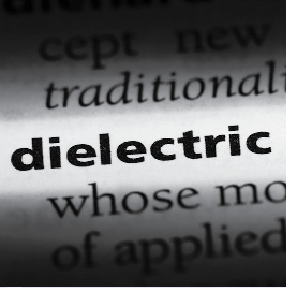
This system is designed to be 100% reactive with no need for solvent. Our proprietary blend is <30 cP, but can also be tailored to a variety of viscosities for several dispense techniques, including ink-jetting and traditional jet-dispensing. After a brief thermal cure, it polymerizes and solidifies to a thermoset in place. On its own, the polymer is capable of UL-94 V-0 rating. Its dielectric constant and low loss are comparable to PTFE, but its low viscosity may provide processing advantages.
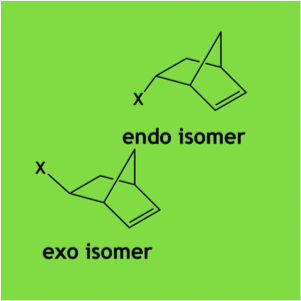
Our breakthrough catalyst technology enables us to polymerize functionalized norbornene monomers to make polynorbornenes (PNB) or cyclic olefin polymers (COP). To facilitate the demand for polymers and their applications, a broad array of functionalized norbornene monomers are available (e.g., acetate, ester, alcohol, ether, amine, alkyl, ketone, anhydride, silyl ether, epoxide, phenyl, vinyl). Contact us if you have a high value application requiring functionalized norbornene synthesis.

PDM-5067 stems from the growing base of our core catalyst technology. Functionalized norbornene monomers are subjected to addition polymerization. This mechanism allows us to produce living-like polymers oftentimes demonstrating polydispersities less than 1.1. This enables controlled addition for formation
of A-B block copolymers and A-B-A triblock copolymers, as well as hyper-branched or telechelic-functionalized polymers.

The molding of polymers is a long-standing technology that involves heating a polymer above its crystallization temperature, while applying pressure in a cavity mold. PDM-5070 is an amorphous material, but its architecture can be modified to increase the melt flow rate (from 1 up to 40 grams/10 min) and decrease the melt viscosity (from 160 down to 40 cP at 200 ̊C). A molded part can maintain glass-like transparency with a Tg exceeding 200 ̊C.